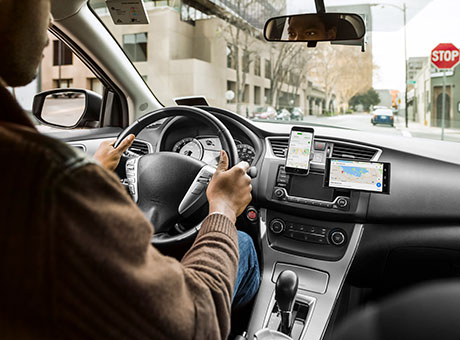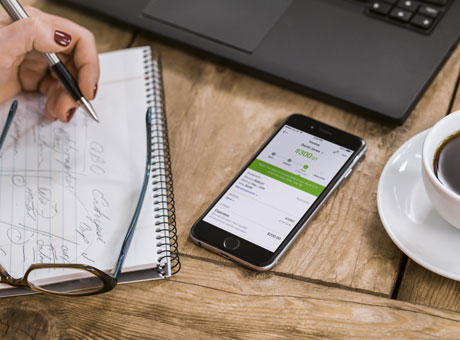Driving for Uber and similar companies can be a great way to line your pocket with a bit of extra cash. However, if you’re one of the tens of thousands of Canadians who’ve picked up one of these driving jobs, it’s important to understand your tax obligations.

Taxes and Bookkeeping for Uber Drivers
Tax Rules for Independent Contractors
Uber doesn’t employ its own drivers. Instead, the company pays drivers as independent contractors. Under the Canada Revenue Agency’s rules, independent contractors are small business owners. This designation means that you have to report your driving revenue as income, and you have to pay income tax accordingly. Luckily, however, you can subtract business expenses from your revenue.
Calculating Self-Employment Vehicle Expenses
To track your vehicle expenses for tax purposes, note the reading on your odometer at the beginning of the year and the end of the year. Throughout the year, keep a logbook of all the kilometres you drive for work, along with a description including the time and date of each trip. At the end of the year, figure out your kilometres driven for work as a percentage of your total kilometres driven. For example, if you drive 2,000 kilometres as an Uber driver and you drive 10,000 total for the year, 20% of your eligible vehicle expenses are deductible as business expenses. If you incur $5,000 in vehicle expenses, $1,000 (or 20% of the total) is deductible.
Eligible Automobile Expenses
Eligible expenses include licence and registration fees, fuel costs, and insurance. If you lease a vehicle, you may also include a portion of your monthly leasing fee; if you buy a vehicle, you may also claim a capital cost allowance for that expense. Finally, Interest on a car loan is also considered an eligible expense. “This is one area the CRA loves to audit,” according to tax lawyer Dale Barrett. To make yourself audit-proof, you should keep detailed records of all your expenses. In addition to writing down expenses and keeping receipts, you may want to use an expense tracker that syncs with your accounting software so you never overlook a write-off.
Tracking Kilometres
Note that the Uber app tracks the kilometres you drive, but in many cases, for tax purposes, you can include more kilometres than the apps tracks. To explain, the Uber app historically only tracks your kilometres when you have a fare in the car. However, from a tax perspective, you should also count the kilometres you drive to pick up your fares as well.
Apps such as QuickBooks Self-Employed allow you to track mileage by simply turning on the app at the beginning of the drive and switching it off at the end. The app also tracks the destination and lets you add notes about the purposes of the trips so you have all the information you need in case of an audit.
Deducting Mileage When You Drive a Personal Vehicle for Business
If you use your car for your business, the Canada Revenue Agency allows you to claim a portion of your vehicle expenses as a business deduction. It’s important to understand all the rules and to track your time behind the wheel carefully so you can maximize your deduction.
Claiming vehicle expenses as business expenses involves a few different steps. To get started, you should note your odometer’s reading. Next, find an easy-to-use system for tracking the mileage and expenses on each trip. Finally, don’t forget to track all your expenses and claim your capital cost allowance (CCA) for your vehicle.
Understand the CRA’s Deductions for Business Vehicles
As a small business owner, you don’t report mileage to the Canada Revenue Agency (CRA). Instead, if you use a vehicle for business, you write off a portion of your expenses based on the amount of time you drive the vehicle for work.
For example, if you drive 20,000 kilometres total and 10,000 kilometres are for work, you may report 50% of vehicle expenses as business expenses.
Don’t Forget to Claim Capital Cost Allowance
If you own the vehicle you use for work, you can claim the value of that vehicle as part of your capital cost allowance. The amount you can claim varies based on the type of vehicle and other factors. In most cases, you claim a portion of the vehicle’s cost annually and write off the entire value incrementally over time.
Other Business Expenses
Also remember to track any other expenses you incur for your business. Business cards and supplemental paid advertising both fall into this category. If local regulations require you to put a camera in your car, as many taxi drivers are required to do, that expense is also deductible.

